Space
The most accurate estimate of the mass of the Milky Way was published
Published
12 months agoon
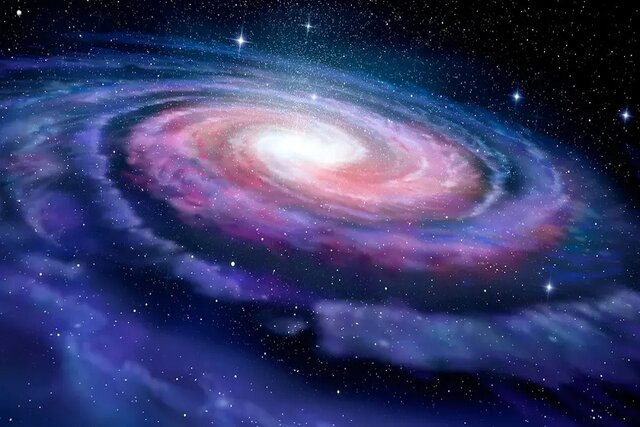

The most accurate estimate of the mass of the Milky Way was published. Chinese scientists have calculated the most accurate estimate of the Milky Way’s mass to date using the largest dataset ever.
The most accurate estimate of the mass of the Milky Way was published
A group of Chinese scientists used data from the European Space Agency’s Gaia Observatory (GAIA) to estimate the mass of the Milky Way.
According to their calculations, the mass of our host galaxy is roughly equivalent to 805 billion suns. Although this size is too large to process, it is actually significantly smaller than the estimate that scientists in the United States made in 2019.
Estimating the mass of the Milky Way
Measuring the mass of the Milky Way is impossible with current technologies, although scientists have been able to make estimates with increasing precision in recent years.
Scientists from the National Astronomical Observatory of the Chinese Academy of Sciences described the method behind their new estimate in a paper published in the Astrophysical Journal. The authors used a larger dataset than before consisting of 260,000 stars for this research.
Read More: A legacy left by a dead rover
A large part of this data comes from the Gaia Observatory. Gaia was launched in 2013 from the European Space Launch Pad in French Guiana, and its mission is to create a detailed 3D map of astronomical objects throughout the Milky Way. As such, its data serve as a comprehensive sample of large parts of our galaxy.
Using this massive data set, scientists surveyed the Milky Way and measured the curvature of its rotation. Rotational curvature refers to the orbital speed of an astronomical object relative to its radial distance from the center of the galaxy. They also intended to account for dark matter in their calculations.
The new estimate is the most accurate measurement of the Milky Way’s rotation curvature to date, the researchers said in a statement.
A great and unattainable task
Another group of scientists from the Space Telescope Science Institute (STScI) in Baltimore, Maryland, USA, estimated in 2019 that the Milky Way has a mass equal to 1.5 trillion solar masses. They used data from the Hubble telescope and the Gaia observatory to make their estimate and measure the three-dimensional motion of globular star clusters.
One of the scientists behind this estimate explained the importance of estimating the mass of the Milky Way at the time. Roland van der Marel of the Space Telescope Science Institute (STScI) said: “We want to know the mass of the Milky Way more precisely so that we can put it in a cosmic context and compare it to simulations of galaxies in the evolving universe.” Because not knowing the exact mass of the Milky Way creates problems for many cosmological questions.
It’s worth noting that although this latest estimate used the largest data set to date, it goes without saying that 260,000 stars are also a relatively small fraction of a galaxy that is thought to be home to at least 100 billion stars of widely varying masses.


You may like
-

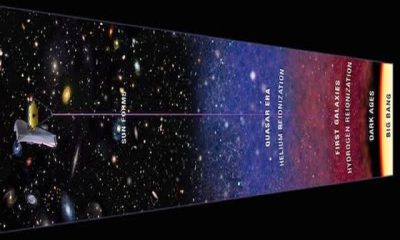


Why the James Webb telescope does not observe the beginning of the universe?
-

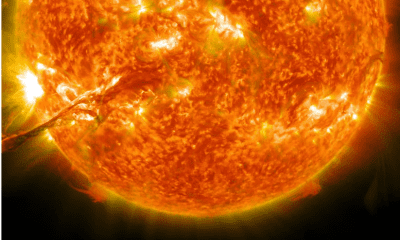


How can solar storms destroy satellites so easily?
-

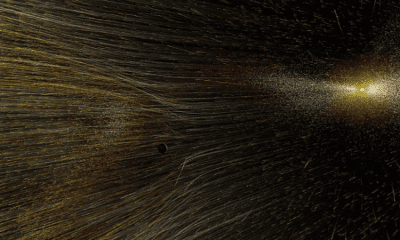


What is the solar wind and how does it affect the Earth?
-

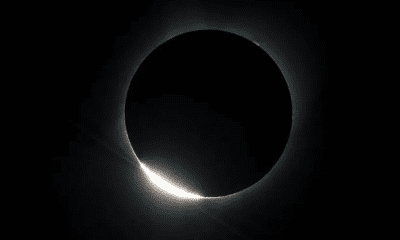


How did solar and lunar eclipses shape human history?
-

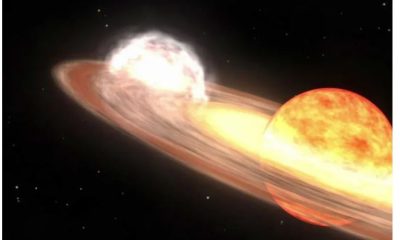


A dead star will soon explode in the sky
-

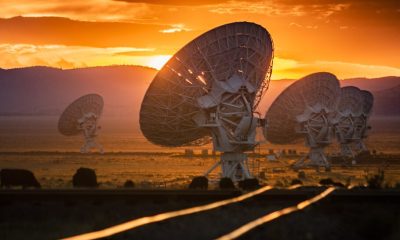


What is Radio Astronomy?
Space
Why the James Webb telescope does not observe the beginning of the universe?
Published
7 days agoon
12/04/2024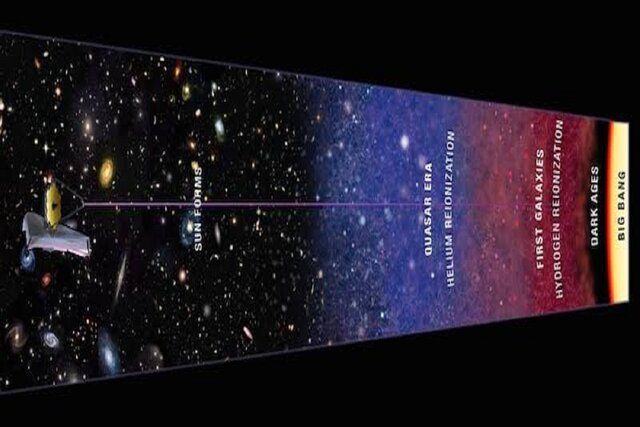

The James Webb Space Telescope is one of the most advanced telescopes ever built. Planning to launch James Webb began more than 25 years ago, and construction efforts took more than a decade. On December 25, 2021, this telescope was launched into space and within a month it reached its final destination, 930,000 miles away from Earth. Its position in space gives it a relatively unobstructed view of the world.
Why the “James Webb” telescope does not observe the beginning of the universe?
The design of this telescope was a global effort led by NASA and aims to push the boundaries of astronomical observation with revolutionary engineering. Its mirror is huge, about 21 feet (6.5 meters) in diameter, which is about three times the size of the Hubble Space Telescope, which was launched in 1990 and is still operating.
According to SF, it’s the telescope’s mirror that allows it to gather light. James Webb is so big that it can see the faintest and most distant galaxies and stars in the universe. Its advanced instruments can reveal information about the composition, temperature, and motion of these distant cosmic bodies.
Astrophysicists constantly look back to see what stars, galaxies, and supermassive black holes looked like when their light began its journey toward Earth, and use this information to better understand their growth and evolution. For the space scientist, the James Webb Space Telescope is a window into that unknown world. How far can James Webb look into the universe and its past? The answer is about 13.5 billion years.
Time travel
A telescope does not show stars, galaxies, and exoplanets as they are. Instead, astrologers have a glimpse of how they were in the past. It takes time for light to travel through space and reach our telescope. In essence, this means that looking into space is also a journey into the past.
This is true even for objects that are quite close to us. The light you see from the sun has left about eight minutes and 20 seconds earlier. This is how long it takes for sunlight to reach the earth.
You can easily do calculations on this. All light, whether it’s sunlight, a flashlight, or a light bulb in your home, travels at a speed of 186,000 miles (approximately 300,000 kilometers) per second. This is more than 11 million miles, which is about 18 million kilometers per minute. The sun is about 93 million miles (150 million kilometers) from the earth. which brings the time of reaching the light to about eight minutes and 20 seconds.
Why the “James Webb” telescope does not observe the moment of the beginning of the universe?
But the farther something is, the longer it takes for its light to reach us. That’s why the light we see from the closest star to us other than the Sun, Proxima Centauri, dates back four years. This star is about 25 trillion miles (about 40 trillion kilometers) from Earth, so it takes a little over four years for its light to reach us.
Recently, James Webb has observed the star Earendel, which is one of the most distant stars ever discovered and the light that James Webb sees is about 12.9 billion years old.
The James Webb Space Telescope travels much further into the past than other telescopes such as the Hubble Space Telescope. For example, although Hubble can see objects 60,000 times fainter than the human eye, James Webb can see objects almost 9 times fainter than even Hubble.
Read more: How can solar storms destroy satellites so easily?
Big Bang
But is it possible to go back to the beginning of time?
Big Bang is the term used to define the beginning of the universe as we know it. Scientists believe that this happened about 13.8 billion years ago. This theory is the most accepted theory among physicists to explain the history of our universe.
However, the name is a bit misleading because it suggests that some kind of explosion, like a firework, created the universe. The Big Bang more accurately represents space that is rapidly expanding everywhere in the universe. The environment immediately after the Big Bang resembled a cosmic fog that covered the universe and made it difficult for light to pass through. Eventually, galaxies, stars, and planets began to grow.
That’s why this period is called the “Cosmic Dark Age” in the world. As the universe continued to expand, the cosmic fog began to lift and light was finally able to travel freely through space. In fact, few satellites have observed the light left over from the Big Bang some 380,000 years after it happened. These telescopes are designed to detect the glow left over from the nebula, whose light can be traced in the microwave band.
However, even 380,000 years after the Big Bang, there were no stars or galaxies. The world was still a very dark place. The cosmic dark ages did not end until several hundred million years later when the first stars and galaxies began to form.
The James Webb Space Telescope was not designed to observe the time to the moment of the Big Bang, but to see the period when the first objects in the universe began to form and emit light.
Before this time period, due to the conditions of the early universe and the lack of galaxies and stars, there was little light for the James Webb Space Telescope to observe.
By studying ancient galaxies, scientists hope to understand the unique conditions of the early universe and gain insight into the processes that helped them flourish. This includes the evolution of supermassive black holes, the life cycles of stars, and what exoplanets are made of.


How can solar storms destroy satellites so easily?
On February 4, 2022, SpaceX launched 49 satellites as part of Elon Musk’s Starlink Internet project, most of which burned up in the atmosphere a few days later. The cause of this accident, which caused more than 50 million dollars in damages, was a solar geomagnetic storm.
Geomagnetic storms occur when space weather collides with the Earth and reacts with it. Space weather is caused by the fluctuations of the sun, which lead to the emission of electrons, protons, and other particles into space. When space weather hits Earth, it sets the stage for complex processes that can be troublesome for any object in orbit. Engineers seek to better understand these threats and defend satellites against them.
What is the cause of space weather?
The sun always emits constant amounts of charged particles into space. These particles are called the solar wind. The solar wind carries the solar magnetic field. Sometimes the local oscillations of the sun result in intense bursts of particles in a particular direction. If the Earth is in the path of the strong solar wind produced in these events, it is said to be facing a geomagnetic storm. The two most common causes of geomagnetic storms are coronal ejections (bursts of plasma from the Sun’s surface) and the solar wind, which escapes into space from low-density patches in the Sun’s upper atmosphere.
The speed of ejected plasma or solar wind when it reaches the Earth is an important measure. The higher the speed of the solar wind, the more intense the geomagnetic storm will be. Normally, the solar wind moves at exactly 1.4 million kilometers per hour; But extreme solar storms can be up to five times faster.
The most severe geomagnetic storm recorded due to coronal ejection occurred in September 1859. The particles hitting the ground caused electrical disturbances in the telegraph lines, which surprised the operators and in some more severe cases even caused telegraph machines to catch fire. According to research, if a geomagnetic storm with this intensity hits the earth today, it will cause nearly 2 trillion dollars in damages.
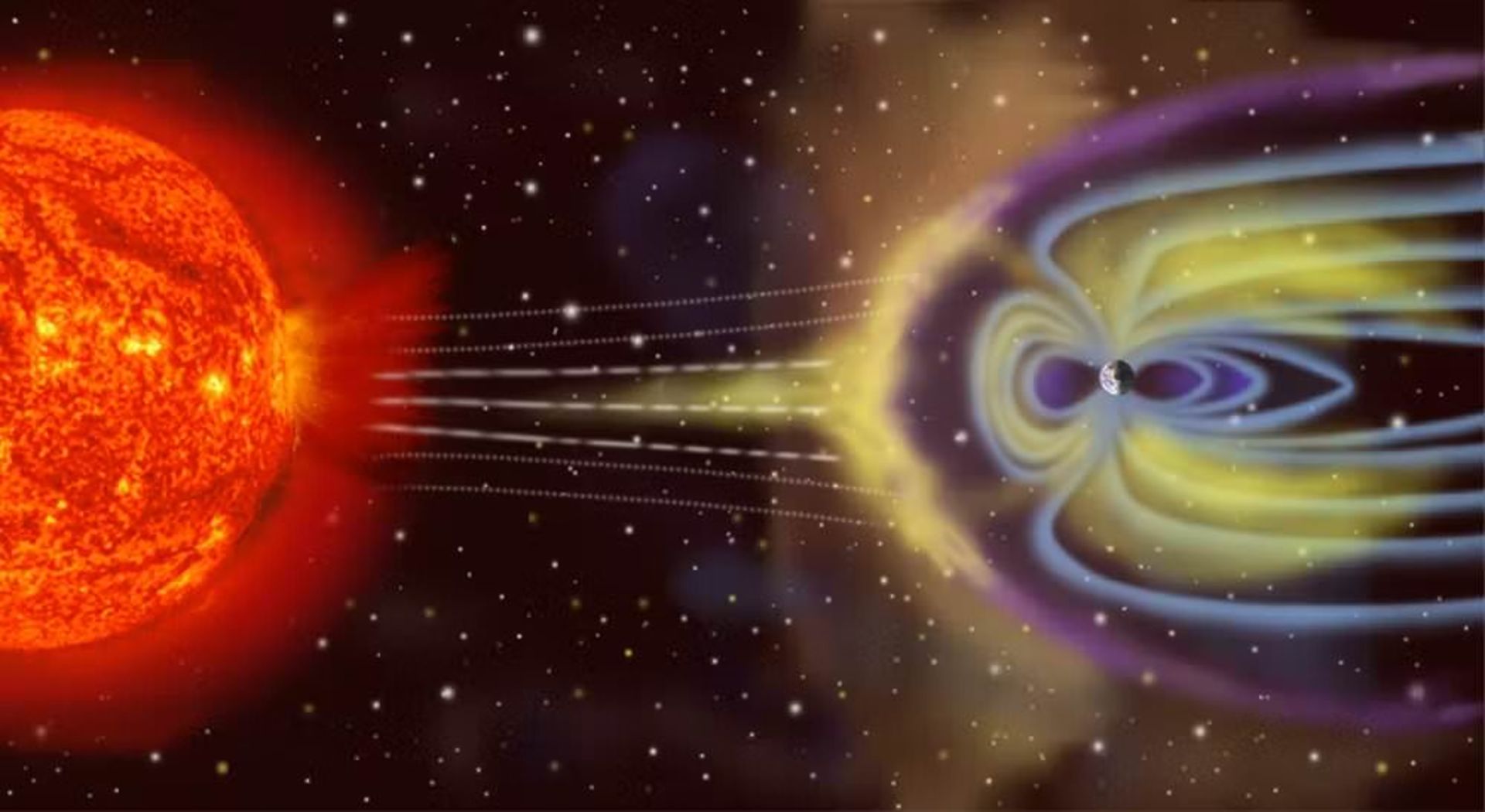
Earth’s magnetic field absorbs much of the solar wind like a shield
Magnetic shield
The emission of solar particles, including the solar wind, is extremely dangerous to any life unlucky enough to be in direct danger of it. However, the Earth’s magnetic field completely protects humans against this danger. The first thing a solar storm hits on its way to Earth is the magnetosphere. This region, which surrounds the Earth’s atmosphere, is filled with plasma made of electrons and ions and is dominated by the Earth’s strong magnetic field. When the solar wind hits the magnetosphere, it transfers mass, energy, and momentum to this layer.
The magnetosphere can absorb a large part of the daily energy of the solar wind; But the occurrence of solar storms may cause an energy spillover, transferring excess energy to the upper atmosphere near the poles. This rerouting of energy to the poles leads to dramatic aurora events, but it can also change the Earth’s upper atmosphere.
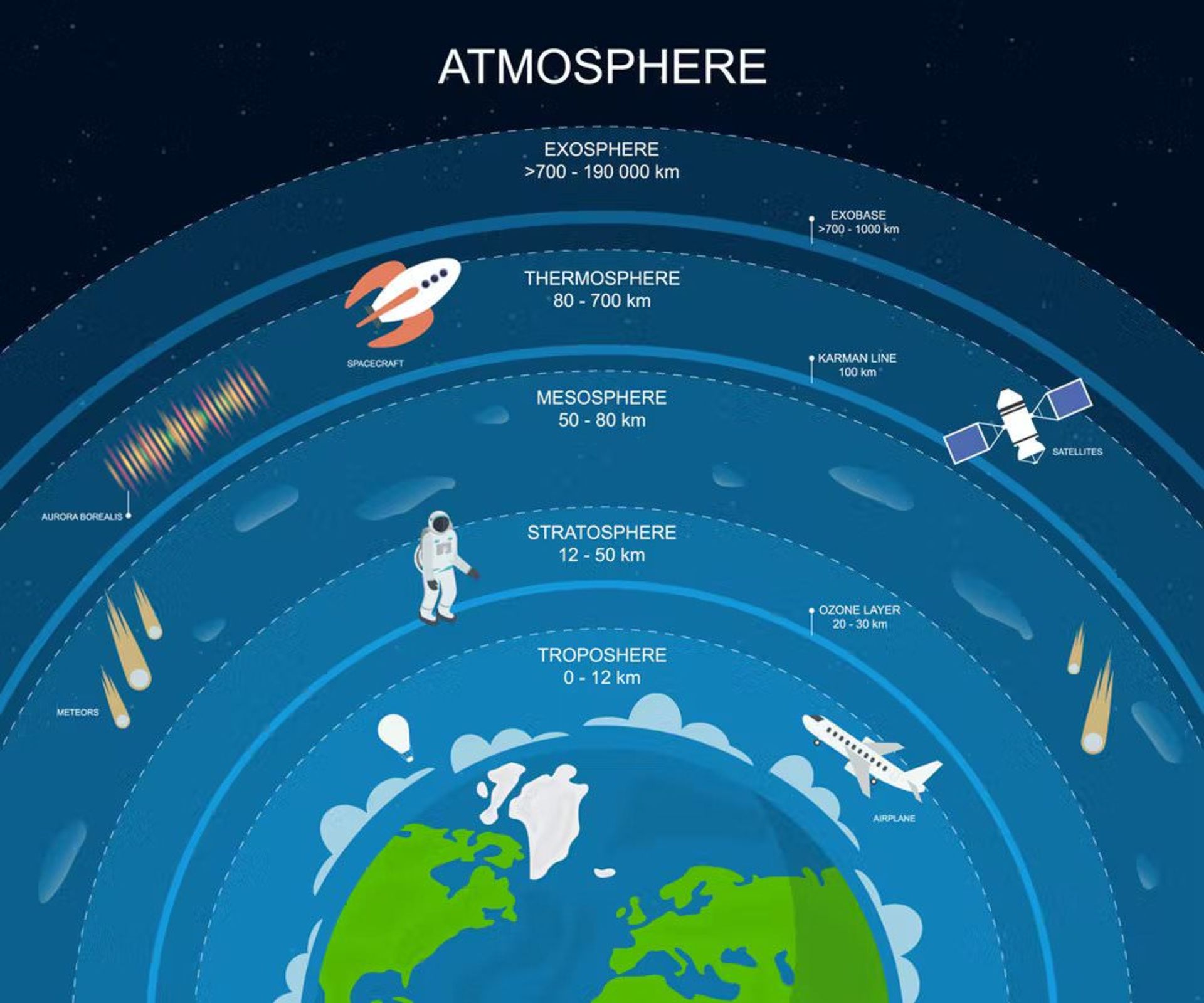
Different layers of the Earth’s atmosphere are affected by solar storms with different intensities.
Danger to objects in orbit
Geomagnetic storms disrupt satellites in orbit in various ways. As the Earth’s atmosphere absorbs energy from magnetic storms, it warms and expands upward. This expansion dramatically reduces the density of the thermosphere. The thermosphere is a layer of the earth’s atmosphere that extends from 80 km to 1000 km above the earth’s surface. Higher density means more drag, which can be problematic for satellites.
This is the exact situation that led to the destruction of SpaceX’s Starlink satellites in February. Starlink satellites are launched into a low-altitude orbit, usually 100 and 200 km above the Earth’s surface, using a Falcon 9 rocket. The satellites then use their independent engines to overcome the drag force and lift them up to a final altitude of approximately 550 km.
The last batch of Starlink satellites in low Earth orbit faced a geomagnetic storm. Their engines could not overcome the strong drag force and eventually fell to the ground and burned up in the atmosphere. Drag force is just one of the threats space weather poses to space-based resources. A significant increase in energetic electrons in the magnetosphere during intense solar storms means that more electrons penetrate the spacecraft’s shield and accumulate in their electronic components. A flurry of electrons can discharge like small lightning strikes and damage electronic components.
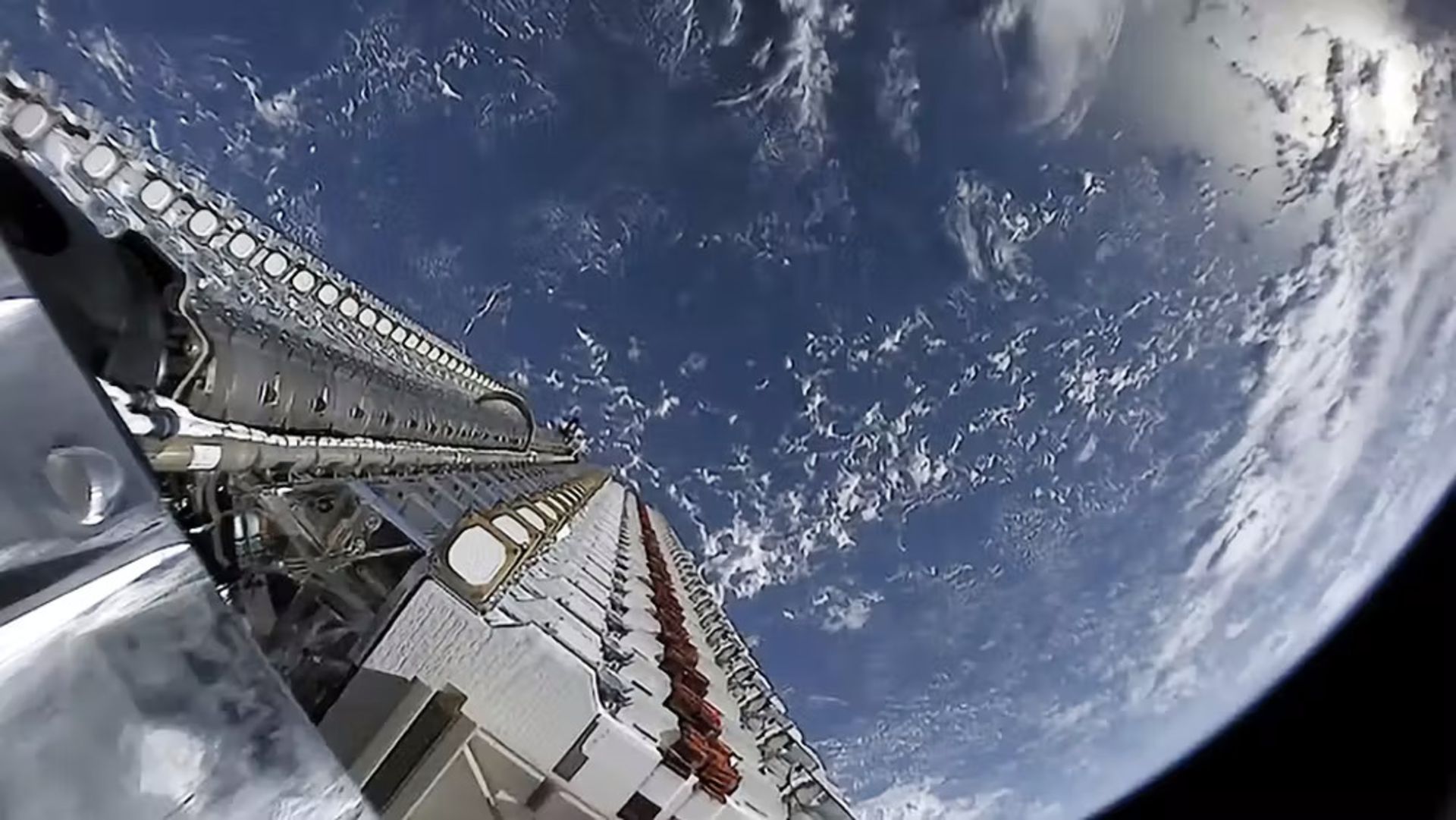
Starlink satellites are placed in orbit in groups. 40 of these satellites were destroyed in early February this year due to a geomagnetic storm.
Penetration of rays or charged particles into the magnetosphere even during moderate geomagnetic storms can change the output signal of electronic devices. This phenomenon can lead to errors in any part of the spacecraft’s electronic system, and if this error occurs in one of the important parts, the entire satellite will be disrupted. Small errors are common and repairable, and complete errors are rare and irreparable.
Finally, geomagnetic storms can disrupt the ability of satellites to communicate with Earth using radio waves. For example, many communication technologies such as GPS depend on radio waves. The Earth’s atmosphere always distorts radio waves to some extent; As a result, engineers solve this problem by building communication systems; But during the occurrence of geomagnetic storms, changes in the ionosphere (the charged equivalent of the thermosphere, which is located at approximately the same height range), change the path of radio waves.
These changes can make it difficult to lock onto GPS signals and result in errors of, for example, a few meters. For many industries such as aviation, maritime, robotics, transportation, agriculture, military industries, and many others industries, a GPS positioning error of several meters is not acceptable at all. Automatic guidance systems also require accurate positioning.
How to protect Earth from space weather?
Satellites are important for the proper functioning of the modern world, and protecting space resources against space weather is also an important part of research. Some of the risks can be reduced by protecting electronic components against radiation or developing resistant materials, But more protective measures should be taken in the face of a powerful geomagnetic storm.
The ability to accurately predict storms allows for proactive protection of satellites and other resources by shutting down sensitive components or reorienting satellites; But even though the modeling and forecasting of geomagnetic storms has improved dramatically over the past few years, predictions often go wrong. The US National Oceanic and Atmospheric Administration had warned of the possibility of material ejecting from the solar corona the day before Starlink’s launch, but the mission went ahead anyway.
The sun is like a child who sometimes gets angry. Its existence is necessary for survival, but sometimes changing its behavior can be problematic.


What is the solar wind and how does it affect the Earth?
The solar wind is the continuous flow of protons and electrons from the outermost layer of the sun’s atmosphere, i.e. the corona or solar corona. According to the Space Weather Prediction Center of the US National Oceanic and Atmospheric Administration, these charged particles blow in the solar system at a speed of about 400 to 800 kilometers per second in the plasma state.
When the solar winds reach the Earth, they send masses of charged particles into the magnetosphere (magnetosphere) along the Earth’s magnetic field lines towards the poles. The interaction of these particles with the Earth’s atmosphere can create the beautiful effect of bright auroras over the polar regions.
Table of Contents
-
What is the solar wind?
-
How far can the solar wind blow?
-
Solar wind speed
-
Solar wind effects
-
How do scientists study the solar wind?
What is the solar wind?
Eugene Parker, a pioneering astrophysicist from America, proposed the existence of the solar wind for the first time. The Parker Solar Probe mission, designed to closely study the Sun, takes its name from this outstanding scientist.
In 1957, Parker was working as an assistant professor at the University of Chicago when he realized that the Sun’s extremely hot corona should theoretically emit charged particles at extremely high speeds. This extreme heating of the corona is one of the most mysterious aspects of the Sun’s behavior, and solar physicists still do not fully understand why the Sun’s outermost atmosphere is hotter than its surface.
Citing NASA’s Jet Propulsion Laboratory, Parker’s theory explains that in the Sun’s corona, the temperature reaches 2 million degrees Celsius and the plasma is continuously heated. Eventually, the temperature of the plasma rises so much that the Sun’s gravity can no longer hold it; As a result, it is thrown into space as the solar wind and drags the Sun’s magnetic field along with it.
Parker explained in 2018 that his theory received a lot of criticism at the time of its presentation. Quoting Parker, the first reviewer of his essay said: “I suggest that Parker go to the library and read up on a subject before attempting to write an essay on it; Because this theory is pure nonsense.
Eventually, astrophysicists such as Subramanian Chandrasekhar, the Indian-American scientist who decades later was named after NASA’s Chandra X-ray Observatory, rose to support Parker’s theory. According to the University of Chicago, although Chandrasekhar was not interested in the idea of particles, he accepted Parker’s theory; Because he couldn’t find a problem with its math. Then in 1962, NASA’s Mariner 2 spacecraft detected the presence of solar wind particles during its trip to Venus.
In addition to the continuous streams of the solar wind, the Sun sometimes ejects large amounts of those charged particles in one go. These events, known as coronal mass ejections (CMEs), can create geomagnetic storms associated with beautiful aurora displays around Earth; But they can cause damage to power grids telecommunication networks, and satellites that are orbiting the Earth.
How far can the solar wind blow?
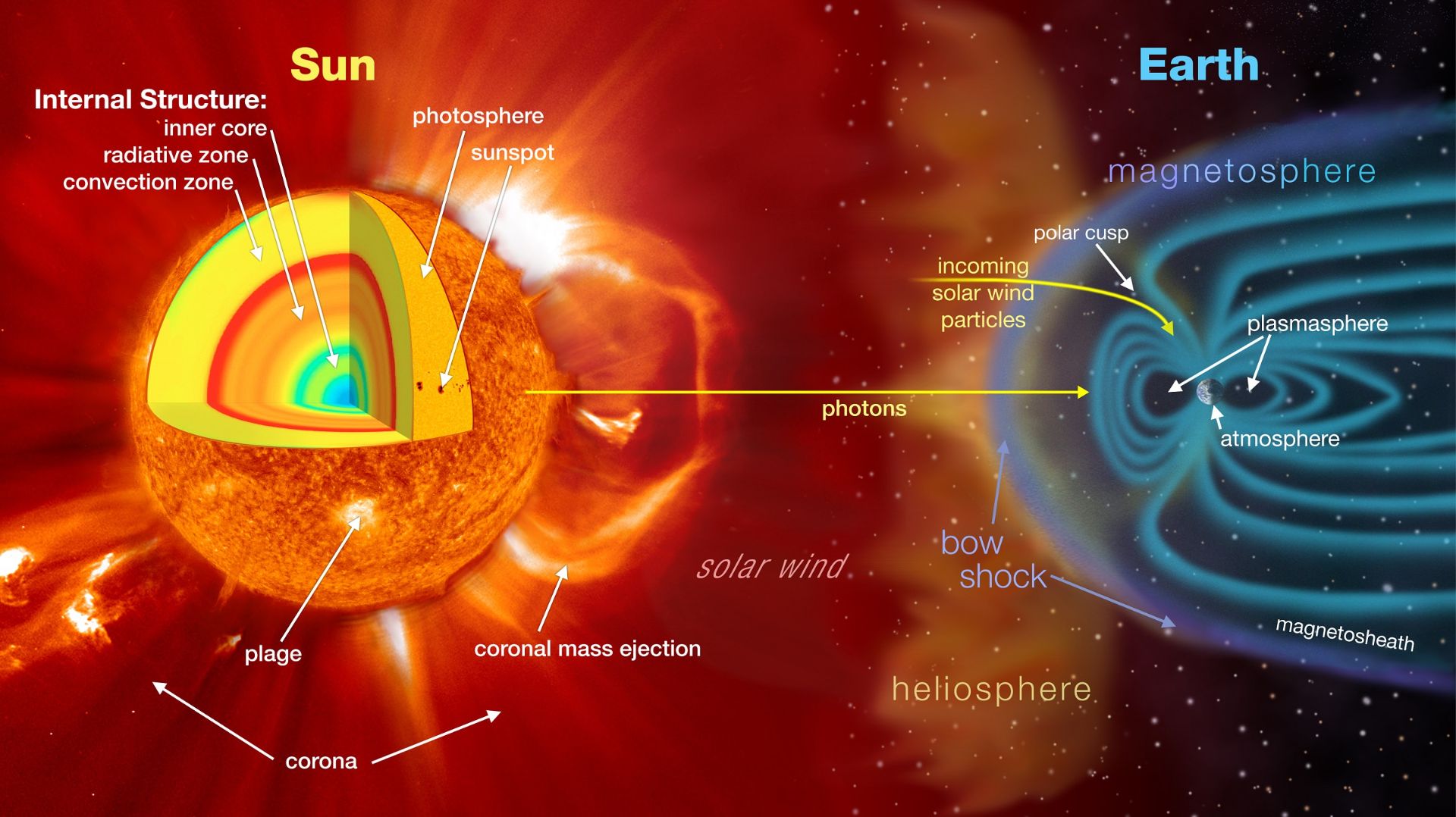
The solar wind consists of charged particles that bombard the Earth’s magnetosphere.
The solar wind blows in the solar system far beyond the orbit of Pluto and forms a large bubble called the heliosphere. According to the European Space Agency, the heliosphere is in the form of an elongated balloon that moves with the Sun and its closest boundary is approximately one hundred astronomical units (AU) from the Sun. An astronomical unit is the average distance from the Earth to the Sun, or roughly equivalent to 150 million kilometers.
The heliosphere acts as a protective shield and protects us from cosmic rays consisting of energetic particles that can damage living cells. Cosmic rays originate outside our solar system and travel through space at nearly the speed of light. Without the protective bubble, these energetic particles would bombard the Earth continuously. “Without the heliosphere, life would certainly have evolved differently, or perhaps not at all,” says Richard Marsden, a heliophysicist at the European Space Agency.
Solar wind speed
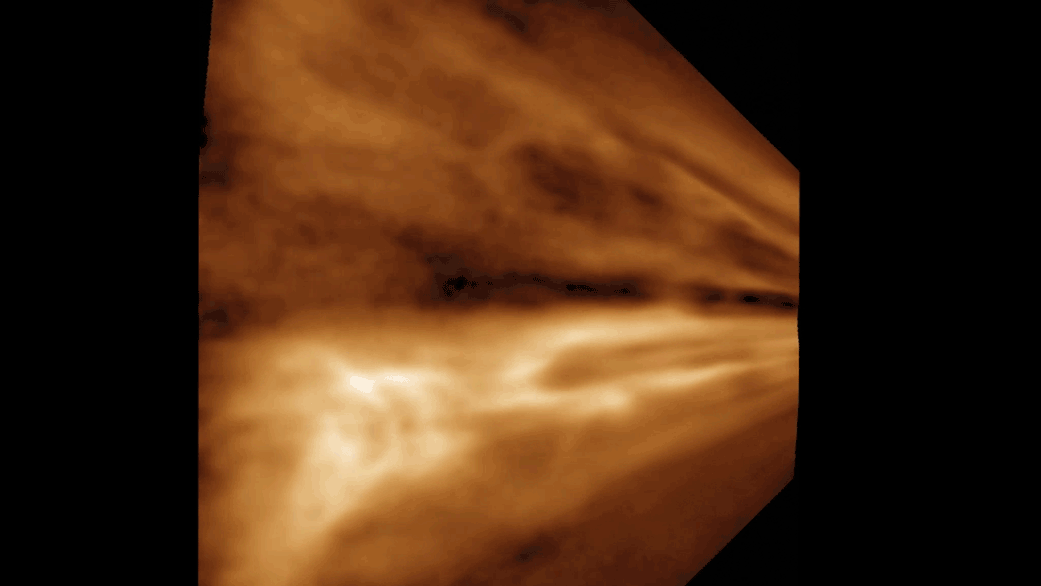
This GIF image visually shows computer-processed data from the solar wind.
Although the solar wind flows continuously from the Sun, its properties such as density and speed vary during the 11-year cycle of the Sun’s activity. During this cycle, the number of sunspots and the level of radiation and ejected material fluctuates from the solar maximum to the solar minimum. These changes affect the characteristics of the solar wind, including the strength of the magnetic field, its speed, temperature, and density.
According to the website spaceweatherlive.com, which predicts space weather, the average speed of the solar wind is approximately 300 kilometers per second (1.1 million kilometers per hour). In comparison, a Category 5 hurricane can hit its surroundings at a speed of 241 km/h.
During Mariner 2’s flyby of Venus, the spacecraft not only discovered the solar wind; He also identified two distinct streams of the solar wind, one fast and the other slow. The speed of the slow current was reported to be nearly 349 kilometers per second; While the fast current moves at twice this speed.
The origin of the fast flow of the solar wind was identified in 1973 using X-ray images of the Sun’s corona from the Skylab space station. Coronal cavities, or cooler regions of the Sun with open magnetic field line structures that allow the solar wind to propagate relatively easily, are responsible for the formation of fast solar winds.
Anomalously fast solar winds can be generated during mass ejection events from the Sun’s corona. During these events, the wind speed can reach more than a thousand kilometers per second. Despite the staggering speeds that the fast streams of the solar wind can reach, it’s the slower solar winds that have baffled scientists. “The slow solar wind is in many ways a bigger mystery,” says Jim Klimczak, a solar physicist at NASA’s Goddard Space Flight Center in Maryland.
-638ba4d2c078cd552de66488?w=1920&q=80)
Mass ejection from the Sun’s corona as seen by the Solar and Heliospheric Observatory (SOHO).
NASA’s Ulysses spacecraft, launched in 1990, revealed some clues about the origin of the slow flow of the solar wind as it flew around the Sun’s poles. The spacecraft found that during periods of minimum solar activity, the solar wind originates mainly from the solar equator.
According to NASA, as the solar cycle progresses towards maximum activity, the structure of the solar wind changes from two distinct regimes (fast at the poles and slow at the equator) to a mixed and heterogeneous flow. NASA’s Parker Solar Probe will investigate this mystery of the Sun during its seven-year mission. Klimchak sees Parker as promising to provide new fundamental knowledge about this.
Solar wind effects
The effects of our wind star are felt throughout the solar system. “My feeling is that if the Sun sneezes, the Earth will get cold,” says Nicky Fox, director of the Heliophysics Unit at NASA Headquarters. “Because we always feel the impact of what happens on the Sun, thanks to the solar wind.”
On Earth, the solar wind is responsible for the formation of dazzling auroras around the polar regions. In the Northern Hemisphere, this phenomenon is called the Northern Lights, and in the Southern Hemisphere, it is called the Southern Lights. If the speed of the solar wind is high enough, geomagnetic storms may form. These storms can extend the auroras closer to the equator compared to calmer space weather conditions.
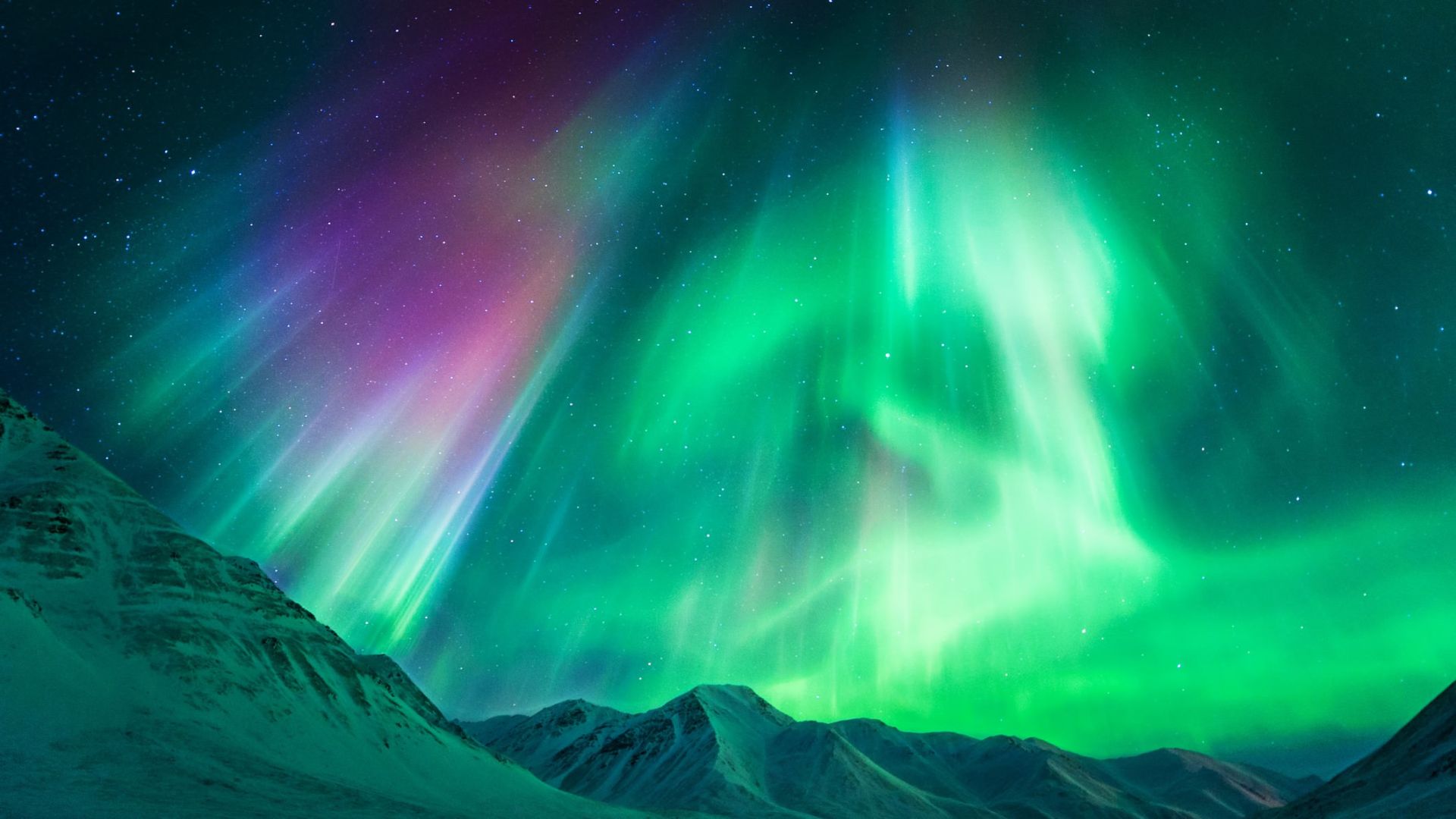
Mass ejection events from the Sun’s corona can create geomagnetic storms that lead to stunning auroras like this one in Alaska.
Geomagnetic storms can also knock out satellites and power grids and threaten astronauts. During these storms, astronauts on the International Space Station must seek shelter, and until the radiation storm has passed, all spacewalks are suspended, and sensitive satellites are turned off.
SpaceX has already seen the damage that space weather can cause; Just as a geomagnetic storm destroyed 40 Starlink satellites worth more than $50 million in February 2022. During release into very low orbits (between 100 and 200 km), Starlink satellites turn on their engines to overcome the drag force and raise themselves to a final altitude of approximately 550 km.
During a geomagnetic storm, the Earth’s atmosphere absorbs the energy of the storms and heats up and expands upwards; An event that leads to a significant densification of the thermosphere. The thermosphere is the fourth layer of the earth’s atmosphere, which extends from approximately 80 kilometers to about a thousand kilometers above the earth’s surface.
A denser thermosphere means more drag, which can be problematic for satellites. In February 2022, a batch of Starlink satellites that had just been released into orbit failed to overcome the greatly increased drag caused by a geomagnetic storm; As a result, they started to fall towards the ground and finally burned up in the atmosphere.
Solar weather can have very expensive consequences; Therefore, it is important to increase our understanding and monitoring, and prediction of such events. Solar wind scientists are working to learn more about space weather and improve predictions. “We cannot ignore space weather,” says NASA. But we can take appropriate measures to protect ourselves.”
How do scientists study the solar wind?
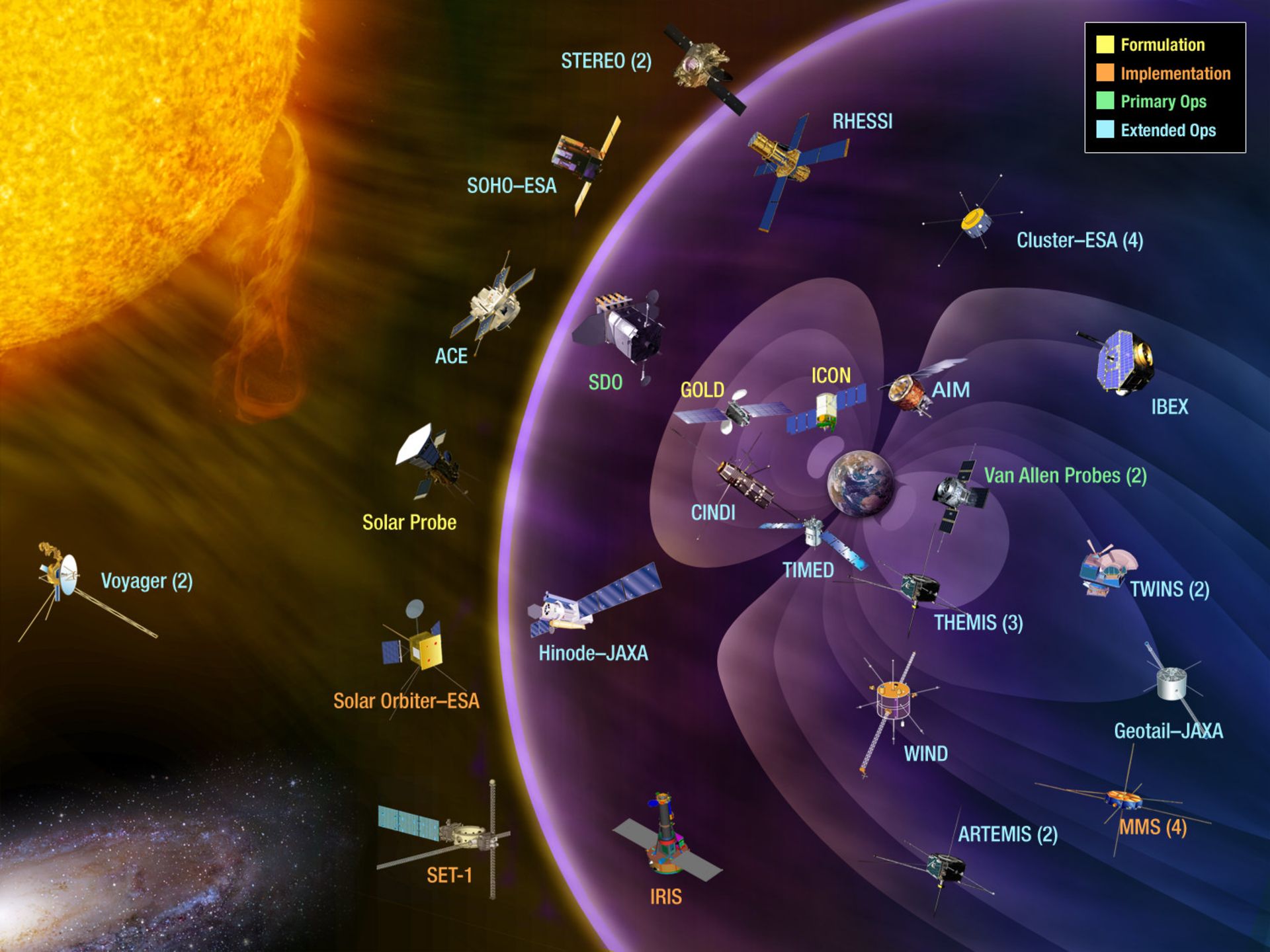
The Heliophysics System observatory consists of a fleet of spacecraft designed to study our dynamic solar system.
Heliophysics missions study the Sun and its effects on the Solar System, including the effects of the solar wind. According to NASA, the purpose of these missions is to understand everything; From how planetary atmospheres are formed and how space weather affects astronauts and near-Earth technologies to understanding the physics governing our cosmic neighborhood in space.
Understanding the solar environment is not a simple achievement; For this reason, a whole fleet of spacecraft is working with the aim of understanding the Sun and its behavior. These missions can be considered as a single observatory called the Heliophysics System Observatory (HSO).
The heliophysics system observatory consists of several solar, heliospheric, geospace, and planetary spacecraft; including the Parker Solar Probe with the audacious goal of touching the Sun, the Solar and Heliospheric Observatory (SOHO) which is a joint mission of NASA and the European Space Agency, the Solar Earth Relations Observatory (STEREO) which consists of two almost identical observatories, and the European Space Agency’s Solar Orbiter which For the first time, it explores the unknown polar regions of the sun.


The biography of Pavel Durov


Is Telegram really safe?


Samsung Galaxy A55 vs Galaxy S23 FE


The secret of the cleanest air on earth has been discovered


Why do people listen to sad songs?


Android 15 features: Everything you need to know 2024 update


One UI 6.1 user interface review; The most complete Android skin


Review of Xiaomi 14 Ultra, price and specifications


What would happen if gravity stopped?


Review of Motorola Edge 40 ; Pure Android in a lovely body
Popular
-



 Technology9 months ago
Technology9 months agoWho has checked our Whatsapp profile viewed my Whatsapp August 2023
-



 Technology10 months ago
Technology10 months agoHow to use ChatGPT on Android and iOS
-



 Technology9 months ago
Technology9 months agoSecond WhatsApp , how to install and download dual WhatsApp August 2023
-

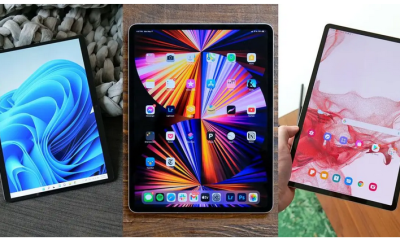

 Technology10 months ago
Technology10 months agoThe best Android tablets 2023, buying guide
-

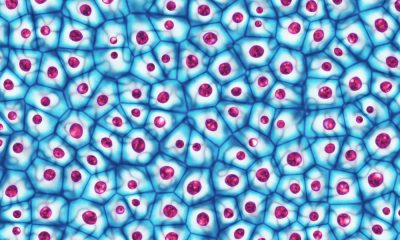

 Humans1 year ago
Humans1 year agoCell Rover analyzes the inside of cells without destroying them
-

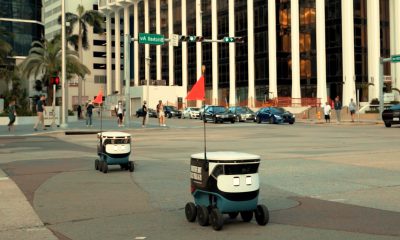

 AI1 year ago
AI1 year agoUber replaces human drivers with robots
-



 Technology10 months ago
Technology10 months agoThe best photography cameras 2023, buying guide and price
-



 Technology10 months ago
Technology10 months agoHow to prevent automatic download of applications on Samsung phones
